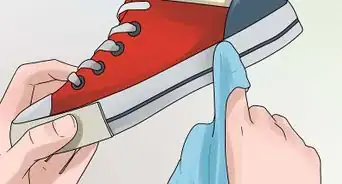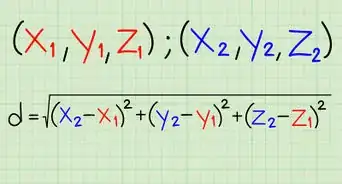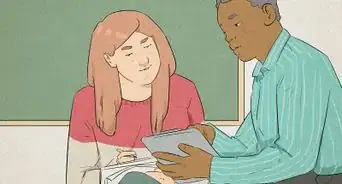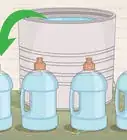X
This article was co-authored by Meredith Juncker, PhD. Meredith Juncker is a PhD candidate in Biochemistry and Molecular Biology at Louisiana State University Health Sciences Center. Her studies are focused on proteins and neurodegenerative diseases.
This article has been viewed 53,375 times.
You have your science experiment completed, all your information typed-up, and your pictures printed. What can you do to make your awesome experiment stand out and attract attention? Follow these steps to wow the audience with your creative tri-fold board.
Steps
Part 1
Part 1 of 2:
Arranging the Content on the Tri-Fold
-
1Create a standout title. Your title should be descriptive, memorable, and legible. Sum up your experiment in bold or clear words and easy-to-read lettering. This is where pre-cut poster letters or alphabet stickers work great. Make the title large enough to be clearly read from across the room.[1]
- For example, a project about creating geodes in eggshells could be titled Geode “Eggs”periment.
- Brainstorm a few catchy title ideas and pick the best one from your list.
-
2Keep all lines straight. When cutting out content to be added to your board, you want to make sure that all of your cuts are straight. With the help of an adult, use a paper cutter or other straight edge to ensure nice, clean lines across your display board.
- If using scissors, draw a straight line across the back of what you’re cutting out and follow it very carefully.
Advertisement -
3Add pictures, charts, and graphs. Visual aids are important to your display board because they help tell your story and break up blocks of text. Add pictures of you performing your experiments, taking observations, and graphs of your data. Keep in mind, too many visual aids can be confusing without enough text to explain what was done.[2]
- Avoid having more than 50% of your board in graphics.
- Add pictures to break up the text and make the poster more attractive to look at.
- Use relevant images. Don’t add pictures that have nothing to do with your experiment just because they look nice.
-
4Use the right font sizes. Different elements of your board will need to be printed in varying font sizes. The title needs to be the largest and viewable from at least halfway across a room. Headings and subheadings should be readable from a few feet away and the explanatory text underneath needs to be easily readable standing in front of the board.[3]
- If you use fonts that are too small, it’s more difficult for a viewer to read and they might not bother looking through everything.
- Keep the font size and type consistent for headings, subheadings, and text.[4]
-
5Layout the content so that it flows well. Make sure your content is posted onto the board in a logical fashion that flows well. Keep the hypothesis, purpose, and supporting literature on the left side panel, the experimental methods, observations, and data in the middle, and the results, analysis, and conclusion on the right side panel.[5]
- You can rearrange this format as you see fit, just make sure unrelated sections aren’t pasted next to each other.
- Avoid giant blocks of text, using bullet points and dashes where possible. The main ideas should be on the tri-fold, but the finer details of your project can be detailed in a printed report.
-
6Print all the text instead of writing it by hand. Use a word processor to type of all of your content and print it out for mounting. If you have access to it, use a higher quality paper to make it stand out. Hand-written content will look sloppy and not get your board noticed in a positive way.[6]
Advertisement
Part 2
Part 2 of 2:
Adding Embellishments
-
1Decide on a theme. This theme can help in choosing your poster’s design, color, and lettering. If your experiment addresses temperature, you could choose orange and blue or red and blue as your color theme to represent hot and cold. A tri-fold about space could be mounted on a black or blue background. These colors could be used in your lettering, borders, or poster board.
- Choose a color scheme with complementary, muted colors so as not to overwhelm the reader. Color is nice, but it’s easy to overdo it if you use neon colors that are difficult to read.[7]
-
2Choose a border. If your tri-fold has too much white space on the outer edges, you can add poster borders.[8] This is another great way to keep with the theme of your project and give your poster a finished look. Keep in mind your theme when choosing border colors or designs.
- For example, a project about the solar system could have a border of planets or stars.
-
3Mount printed information and pictures. Your important information and hard work will stand out when mounted on colored paper. You can also cut the colored paper with decorative edge scissors for an instant design.
- Use a straight-edge paper cutter (with adult assistance) to get clean lines for the background paper.
- You can mount the content in the middle of the background paper or have the paper slightly offset to one side.
-
4Use 3-D visual aids. Add visual interest with eye-catching or 3-dimensional items that fit your poster’s message. A boring picture of a volcano comes alive when an image of an erupting volcano is mounted on foam board and placed 3-D in the center with glittery lava flowing downward.
- Make sure the 3-D aids are relevant to your project. The visual aids must add to the overall project to justify having them on the table.
-
5Add lights, motion, or sound for greater effects. This is where you get your poster noticed and wow the judges. A poster about electricity is noticed when you add poster lights. A poster about aerodynamics will get their heads spinning when the propeller actually spins on your tri-fold board.
- This is your chance to get creative. Don’t overdo it, but add simple elements that add to the overall visual appearance of your board.
Advertisement
Community Q&A
-
QuestionWhat if I run out of supplies?
 Community AnswerIf you can't get to the store, try to use whatever you have around the house. For example, you could use old wrapping paper instead of construction paper.
Community AnswerIf you can't get to the store, try to use whatever you have around the house. For example, you could use old wrapping paper instead of construction paper. -
QuestionWhat kind of glue should I use on a poster board?
 Community AnswerPoster tack or hot glue will work the best. A glue stick is an okay alternative. You definitely want to avoid using liquid glue if you can.
Community AnswerPoster tack or hot glue will work the best. A glue stick is an okay alternative. You definitely want to avoid using liquid glue if you can. -
QuestionWhat decor should I use for a slime experiment?
 GingerCommunity AnswerYou could cut paper to look like a slime splatter, or make the background green with little pictures of slime containers.
GingerCommunity AnswerYou could cut paper to look like a slime splatter, or make the background green with little pictures of slime containers.
Advertisement
References
- ↑ http://www.sciencebuddies.org/blog/2012/03/perfecting-the-project-display-board.php
- ↑ http://sciencefair.math.iit.edu/display/balance/
- ↑ http://www.sciencebuddies.org/blog/2012/03/perfecting-the-project-display-board.php
- ↑ http://www.sciencebuddies.org/science-fair-projects/project_display_board_fonts.shtml?from=Blog
- ↑ http://sciencefair.math.iit.edu/display/layoutflow/
- ↑ http://www.sciencebuddies.org/blog/2012/03/perfecting-the-project-display-board.php
- ↑ http://sciencefair.math.iit.edu/display/colors/
- ↑ http://www.sciencebuddies.org/blog/2015/03/putting-together-a-project-display-board.php
About This Article
Advertisement
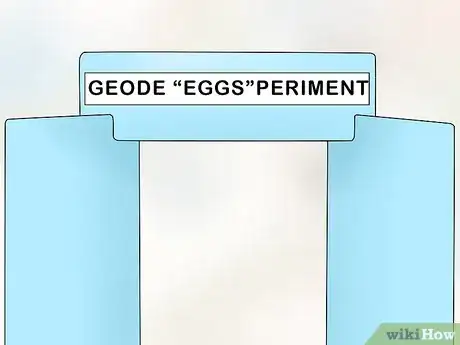
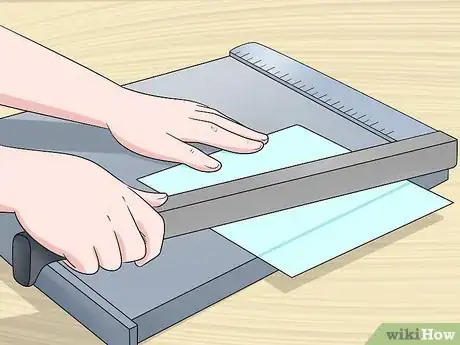
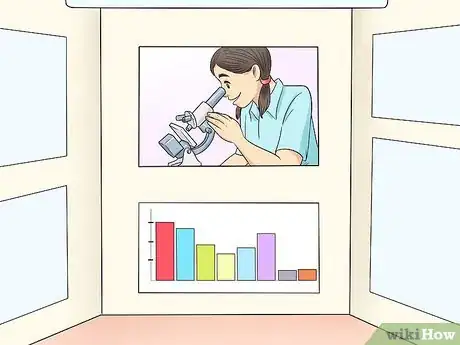

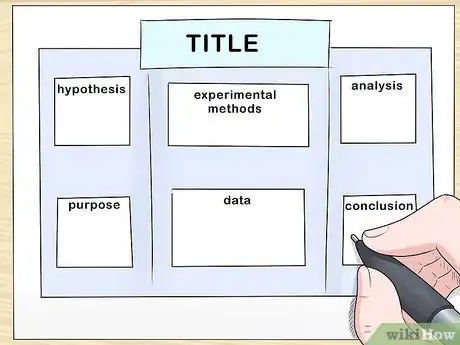
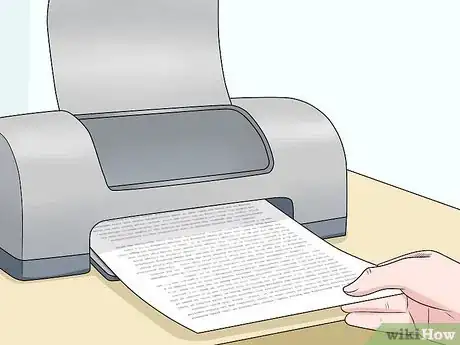
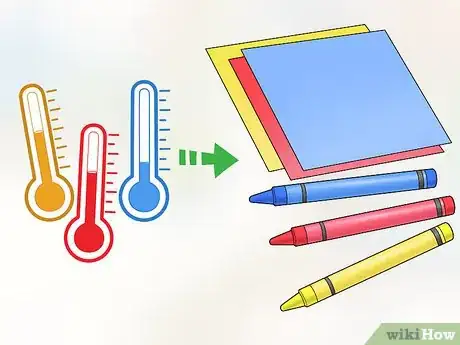
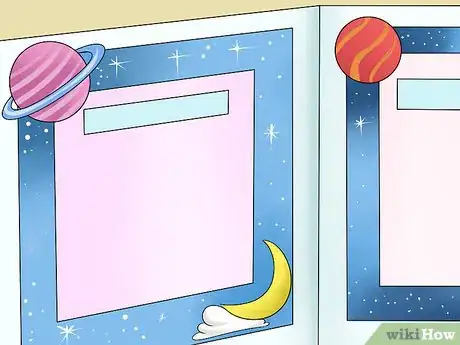

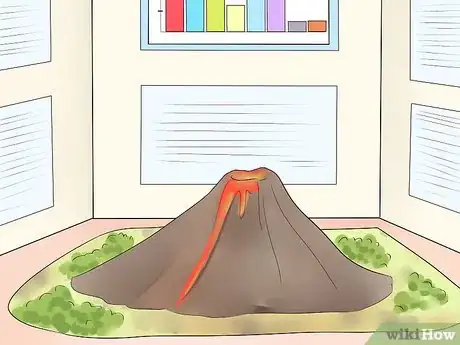
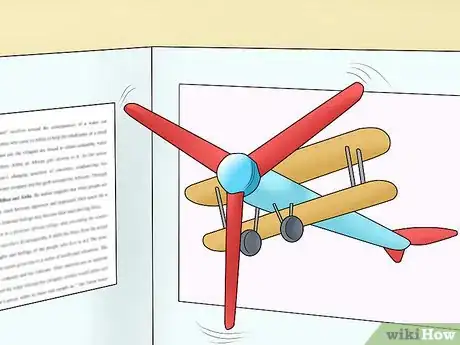
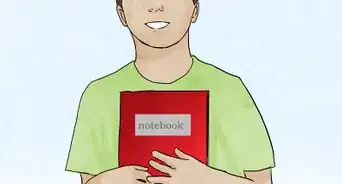
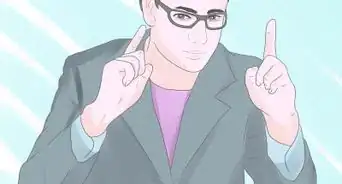



-Electric-Shock-Step-9.webp)
